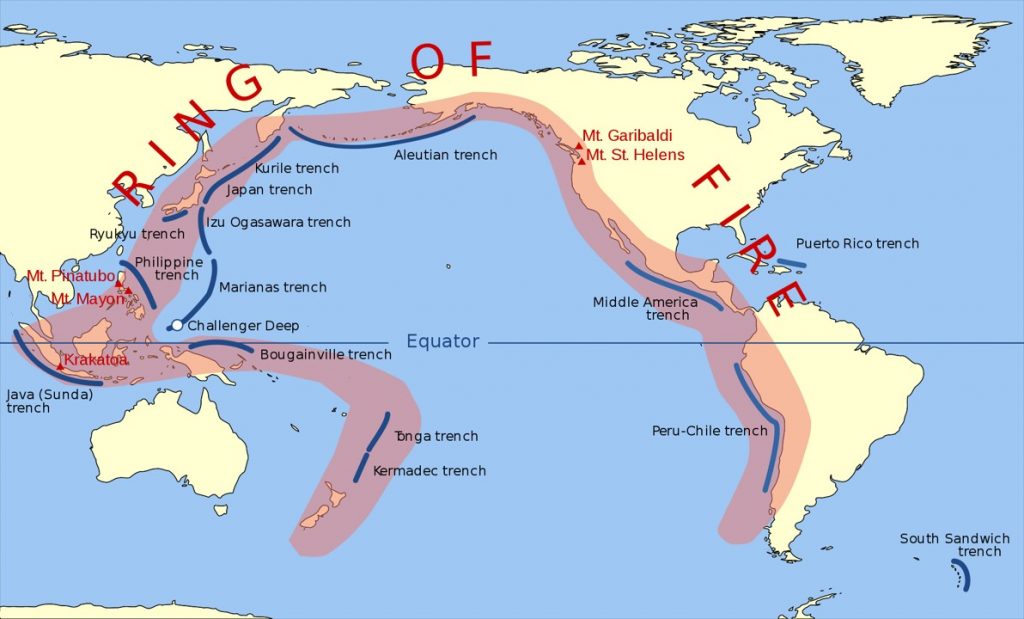Earthquakes
Earthquakes occur all over the world; however, most occur on active faults that define the boundaries of tectonic plates. About 90% of the world’s earthquakes occur along these plate boundaries (which represent about 10% of the surface of the earth). The “Ring of Fire” circling the Pacific Ocean, and including Canada’s west coast, is one of the most active areas in the world.

By Gringer (talk) 23:52, 10 February 2009 (UTC) – vector data from [1], Public Domain, https://commons.wikimedia.org/w/index.php?curid=5919729
Learning Outcomes
After studying this chapter, you should be able to
- define the terms earthquake, epicentre, hypocentre, fault plane and liquefaction
- understand the difference between the main quake and aftershocks
- differentiate between the three main fault types
- understand the relationship between hypocenter depth and plate boundary type
- differentiate between seismic S and P waves and identify the type of motion associated with each
- understand how a seismograph works
- differentiate between the magnitude and intensity of an earthquake
- identify the secondary hazards associated with earthquakes

